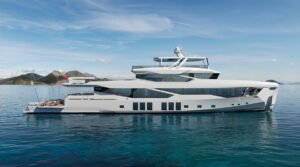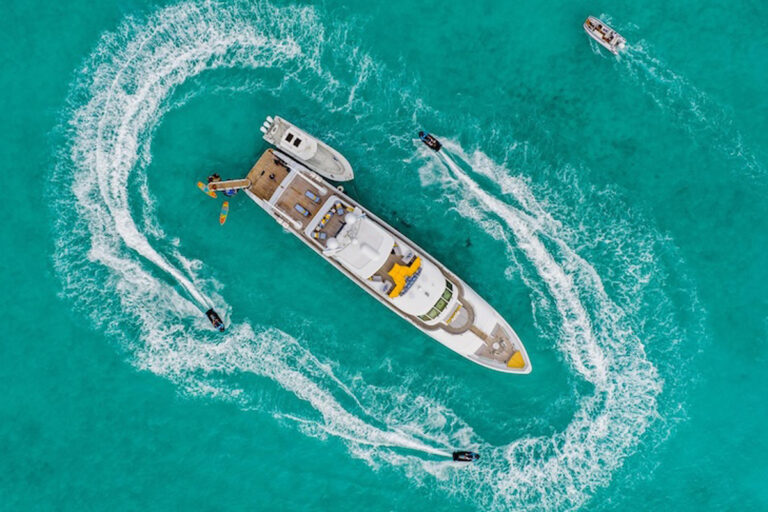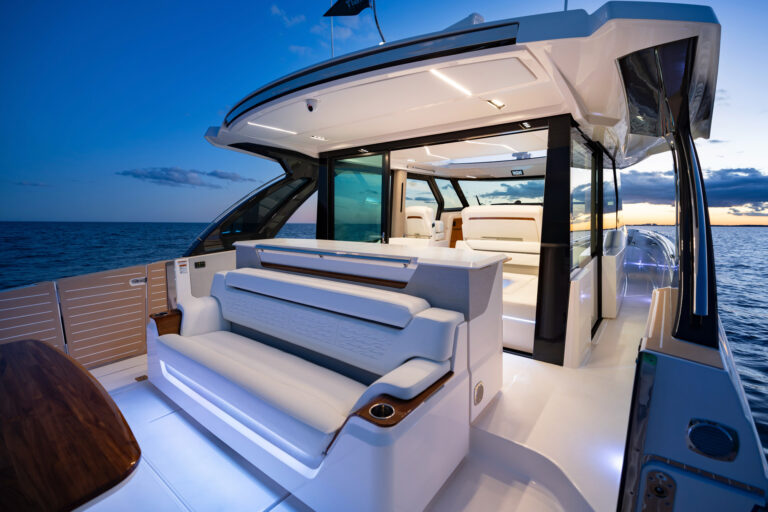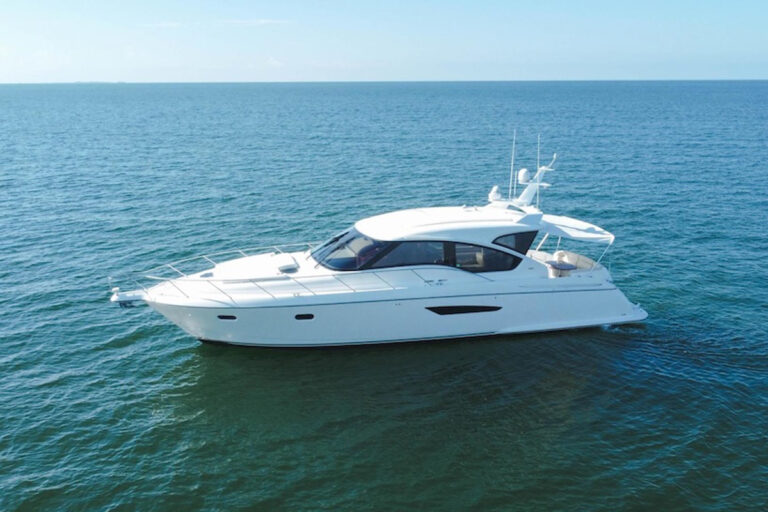
John Vo knows nil about boats. He says it’s ideal for an e-boat builder. “People ask us what experience we have, and I say, ‘Zip. Nothing. Zero,’” says Vo, whose team at Blue Innovations Group is preparing to launch its first electric boat, the R30, this autumn. “But you can’t use the same people from the same industry to revolutionize themselves.”
Vo, the former head of manufacturing for Tesla, is just one among many minds trying to bring electric-powered boats into widespread production. So many longtime boatbuilders are transitioning from internal-combustion to electric power, and so many other builders are popping up anew, that the president of the American Boat and Yacht Council says his agency’s safety experts are being “bombarded” with requests about technology that’s changing by the day. E-boat prototypes and launches are coming from long-standing marine brands such as Chris-Craft (the Launch 25 GTe) and Four Winns (the H2e) at the same time that newer brands are promising everything from an electric dayboat (the Blue Innovations R30) to a catamaran with world-cruising capability, but without generators or fuel tanks (the Zen50).
And as the boats get bigger than about 30 feet length overall, trying to understand all the different ways they can work becomes even more of a challenge.

“I expect, in the nautical industry, we will have full-electric propulsion, but we can expect hybrid energy,” says Michael Jost, founder of eD-TEC, an electric-propulsion system that will be on the Silent Speed 28 tender at the Cannes Yachting Festival this autumn. “There will be smaller boats that can run fully electric, and the bigger boats will have fully electric propulsion but hybrid energy.”
Before joining the marine community, Jost was a manager at Volkswagen, helping to lead its transition to electric power in vehicles. He says the recreational marine industry today is where automotive was decades ago: filled with ideas and trying to learn what the broader marketplace solutions will be. The difference between automotive and marine, he says, is that with marine, you can go from displacement to gliding to foiling.
That’s right: Foiling technology that lifts boats off the water’s surface is also part of e-boat thinking today—so are wing sails, which most boaters recognize as part of the high-tech builds used for America’s Cup racing. And, of course, there’s ever more ways to install solar power, which can help recharge the banks of batteries that make electric boats go.
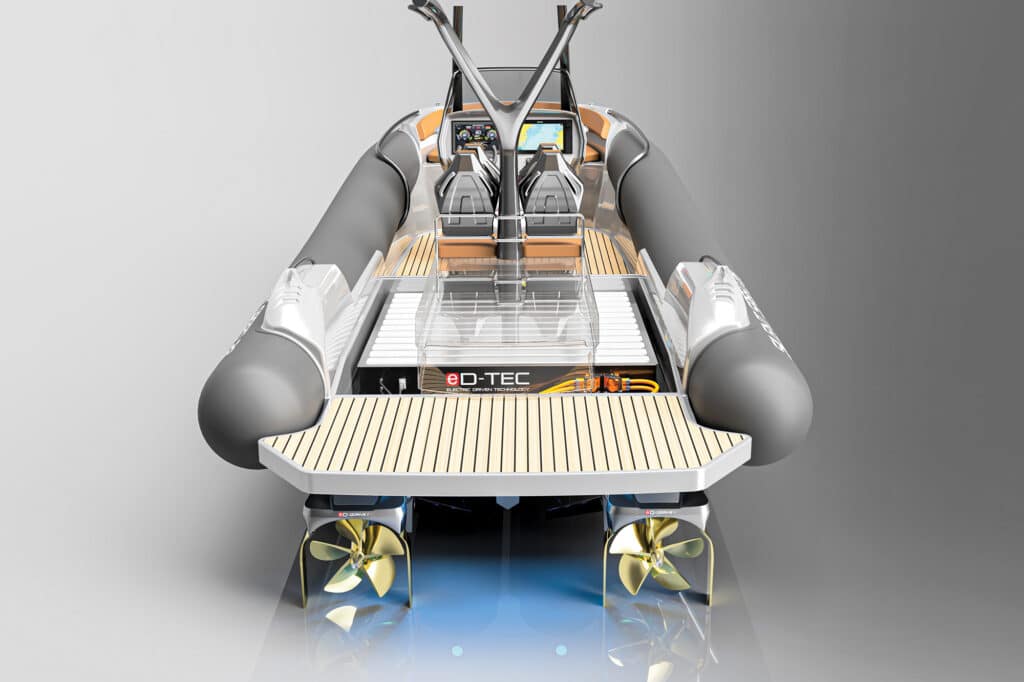
Every possible idea is on the table, Jost says, because the way cruising boats have always been built just isn’t efficient enough for the switch to e-power, which includes heavy batteries that weigh boats down. “The boats of today are not true,” Jost says. “If you have a bad boat, you don’t see it. You put more power, more gasoline inside, and then you are happy. But if you go electric, you are not happy because you don’t get the range. The boat has to be much more efficient than an internal-combustion boat—and the boat business does not want to change the hull. That’s why we are looking to support builders working with the hydrodynamic foils.”
Vo says his team at Blue Innovations Group is also trying to think differently about boat design: Forget about the hulls that traditional molds were built to create, and wonder instead about what might be possible from scratch. “In the old days, anybody who came to Tesla with a long automotive resume, we threw it in the trash,” Vo says. “Otherwise, you’ve got these people with a lot of experience, and they can overwhelm you. Instead of building your vision, they will try to assimilate you, and you revolutionize nothing. You just add another mediocre company. It’s difficult but necessary for us not to hire anybody with boat experience until we reach a critical mass and launch the product. At that point, we’d be stupid not to incorporate their experience into our process.”
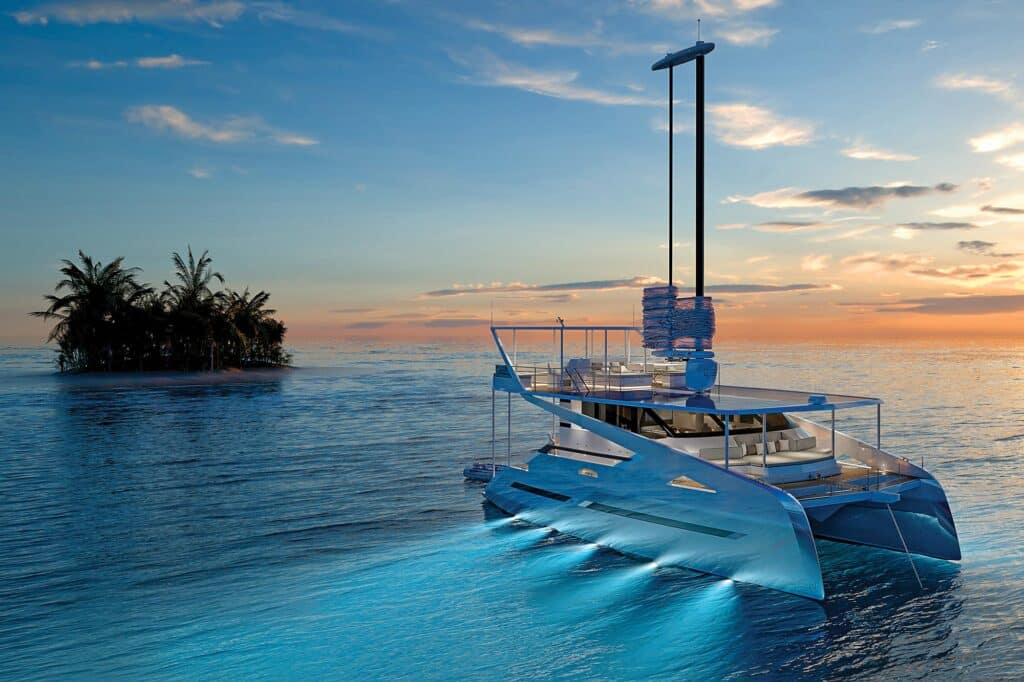
Then again, brands with marine experience are also trying to lead. At Mercury Marine, vice president of e-solutions Perissa Bailey—who previously was director of technology at Ford Motor Co.—says it’s understood that electric boats are still in the phase of early adopters, with companies trying to figure out exactly what consumers want. One thing they know for sure at Mercury Marine, she says: “They don’t want to compromise the time they spend on the water. In the early electrification days in automotive, there were a lot of questions about range anxiety. It forced consumers to think about how many miles they drive a day and what’s the cost of ownership for an electric vehicle for that many miles. We’re going through that same learning curve in marine. Customers are saying, ‘If my leisure boating activity typically consists of this many hours on the water, I don’t want to compromise that just because I go electric. And if there’s a series of activities I do, if I’m [riding on a PWC] or fishing or whatever I do, I don’t want to compromise those either if I go electric. I don’t want to have to adapt my usage pattern to a technology. I want the technology to adapt to that usage pattern.’”
The trick is that the technological solution for a boater who wants to cruise to dinner and back is likely to be far different from the solution for a boater who wants to cruise off the grid for months, says Julien Melot, CEO and designer at Zen Yachts, which is preparing to launch the Zen50 catamaran. It has solar power, along with a wingsail, with the latter adding the long-distance range that previous models lacked. “The last boat was great for coastal cruising, but I would not have sold it to a family that wants to cross the Pacific. If it gets cloudy or overcast, the laws of physics apply, and you won’t have enough power to escape the storm,” Melot says. “On the Zen50, with the addition of the wingsail, that problem is solved.”
As with some of the other brands in the e-boat space, Zen Yachts is seeing early adopters who don’t necessarily fit the profile of traditional boaters. “Our client base is not experienced sailors,” he says. “They are more attracted by the fact that you are self-reliant. If the world collapses one more time, they know they can take their boat out, and they’ll be fine.”
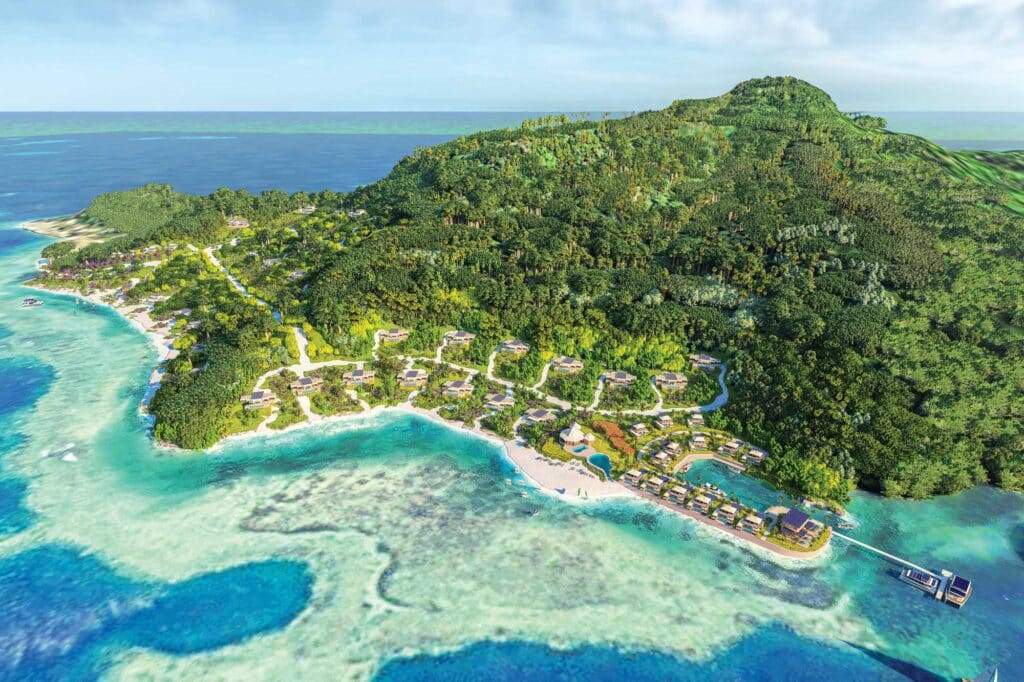
And some leaders in this space are already thinking past the boats. They’re focusing instead on where boaters will want to go, as more styles of e-boats take to the water. Silent-Resorts, which is affiliated with the catamaran builder Silent-Yachts, is now creating destinations to harness electric power and make recharging easy for all types of boats, no matter what comes next. The first location, in the Bahamas, is scheduled to finish construction later this year, with build-out starting on the second location, in Fiji, around that same time. “We’re talking with all the builders,” says Victor Barrett, CEO of Silent-Resorts. “We’re setting up in areas where cruising is popular, and we’re setting up the micro grid that connects the marinas, facilities and residences. If you have a house that’s not occupied, all that power is going into the central grid so the boats can plug in, charge fast and go. The boats can feed power into the island as well. We’ll be the first company in multiple locations to have Silent-Marinas ready to accept electric boats.”
All these advancements, of course, are far from inexpensive. The cost of a Blue Innovations Group R30 is about $300,000. The Silent Speed 28, Jost says, is likely to retail for about 500,000 euros (that was about $550,000 at press time). “The batteries are expensive,” Jost says. “You need new software. You have to develop it. And you have to make it lightweight. It might take about five years for the price to come down.” Until then, expect to pay as much as $440,000 to $660,000 for e-boats up to about 30 feet length overall, he adds. “It’s double what you pay for an outboard system, but the scale of combustion comes from the automotive industry, so if that industry loses scale by going electric, you will also lose that scale for the nautical industry on combustion.”
And the people buying e-boats right now often care more about innovation than prices. Melot says four Zen50 catamarans have been sold. The first and third are going to the East and West coasts in the United States; the other two are headed to Europe. Three of the four clients are Tesla shareholders. “Typically, the clients already have an electric car, they already have solar panels on their home, and the next thing they can buy is an electric boat,” he says, adding that for these folks, electric power is the top consideration. “They don’t want to hear about a yacht that has diesel on board.”
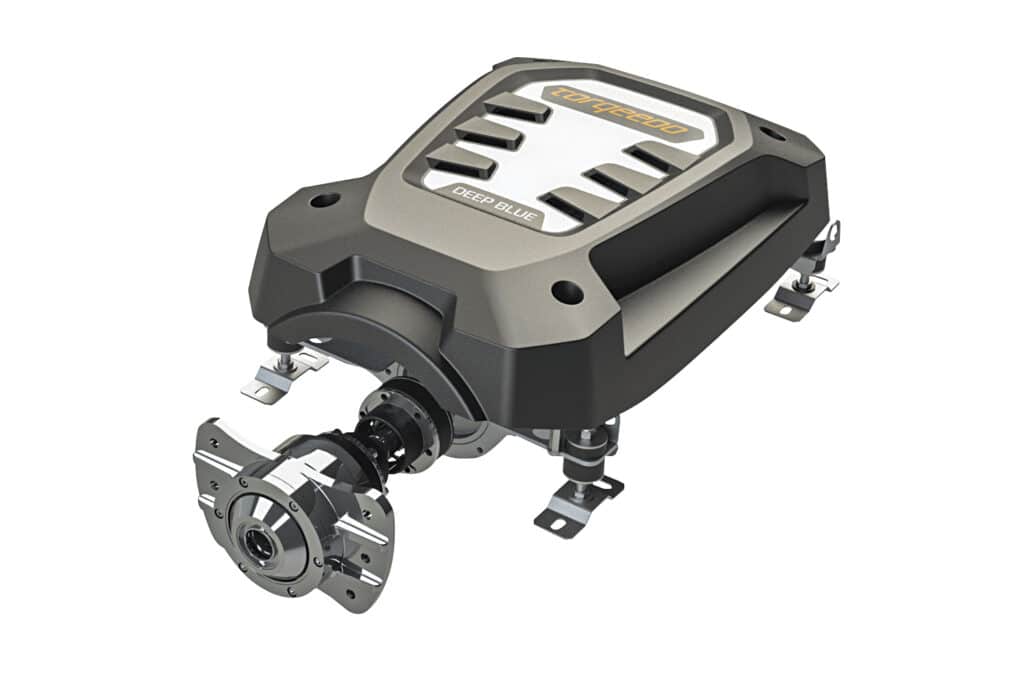
Deep Blue
Torqeedo’s Deep Blue 100i 2500 is an inboard system that provides 100 kW of continuous power for planing powerboats. It’s made with the same type of lithium batteries that are now found in some cars, but with components that are waterproof and that come with monitoring to guard against short circuits. The company offers a nine-year warranty for boats in private use, with the hope that the long guarantee will help customers feel secure about the type of power. Torqeedo also markets Deep Blue as low-maintenance and emission-free.
Taking Orders Now
Blue Innovations Group is taking reservations for the R30, which is expected to cost about $300,000. Customers who put down $5,000 can get one of the first 100 hulls. For $1,000, customers can be next in line after that. As of this writing, more than 50 reservations were in hand.
For Day Cruising
While some e-boat builders are trying to solve design challenges for long-distance cruising, Blue Innovations Group is starting with a dayboat. The 30-foot R30 will have the capacity to carry 12 people with an estimated run time of eight hours and a top hop of 39 knots.
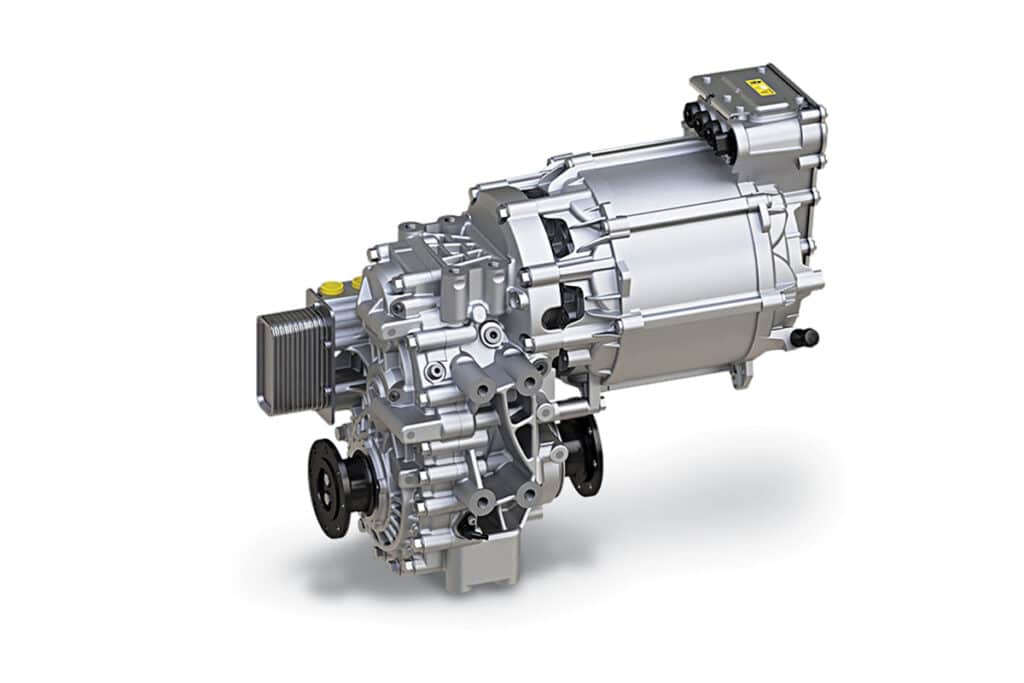
Even Stronger
Swedish e-boat builder X Shore recently announced a partnership with the German company Bosch Engineering to improve the performance and efficiency on the drive system aboard the 21-foot X Shore 1. Bosch’s background is in passenger cars, commercial vehicles, RVs, rail, ships and other industries. This partnership marks Bosch’s first foray into the world of e-boats for leisure use. The goal of the partnership is to share series production experience as well as proven high-performance components from the automotive world.
Floating Solar Concept
The team working on creating Silent-Resorts is talking with government officials in Fiji about deploying a floating ring that collects rainwater and generates solar power as an eco-friendly way to address two of the biggest challenges that hamper island development. Eventually, a similar system may also launch in the Bahamas.



